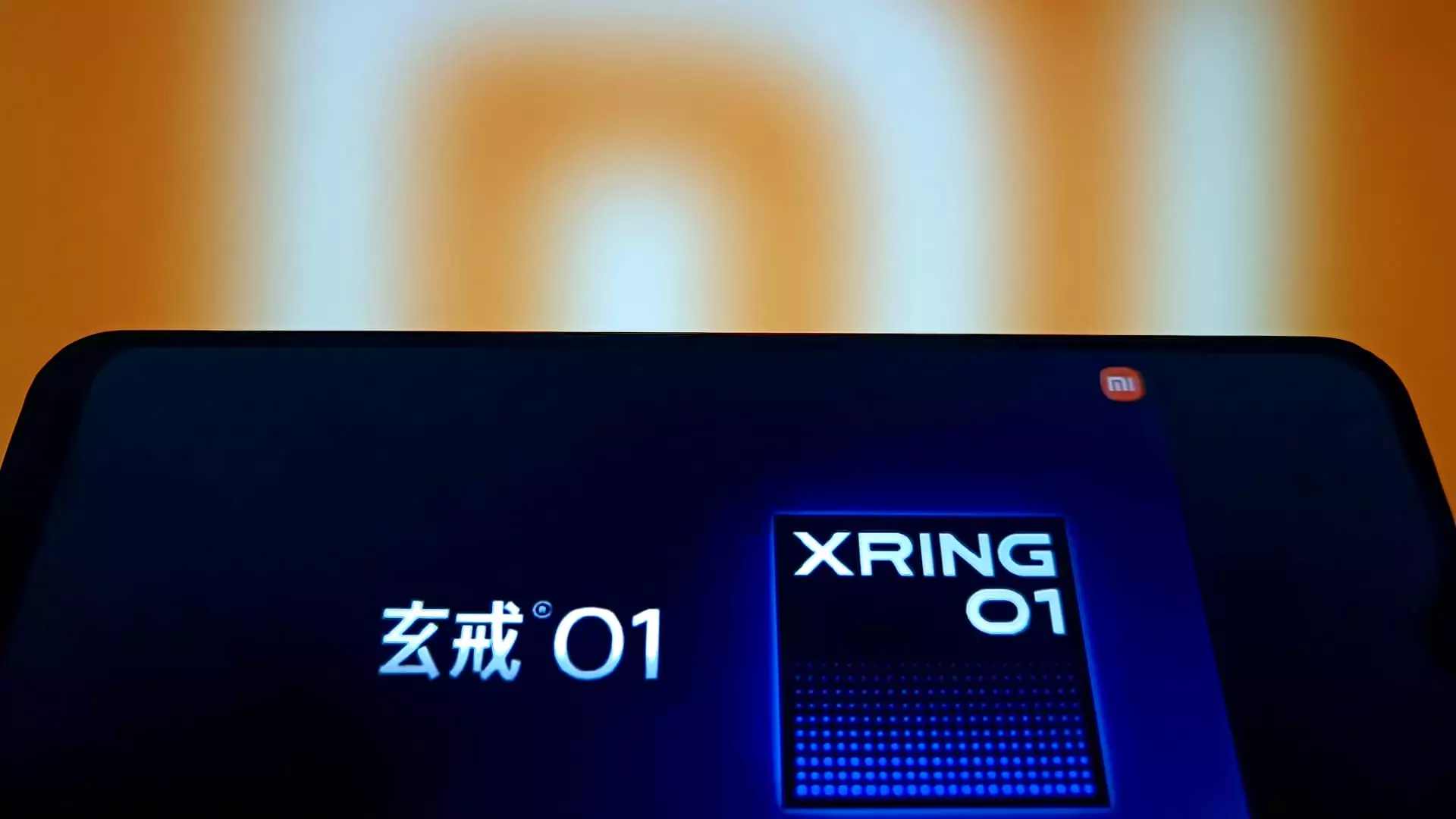In an increasingly competitive smartphone market, Xiaomi’s latest flagship, the Xiaomi 15S Pro, boldly challenges Apple’s long-established dominance. Retailing at a beguilingly low price of 5,499 yuan ($764), this new entrant is not merely an affordable alternative; it epitomizes a strategic gamble designed to disrupt the high-end market space. With Apple’s iPhone 16 Pro starting at 7,999 yuan and the Pro Max at a staggering 9,999 yuan, Xiaomi is offering consumers a budget-friendly option without compromising advanced technological features. In an era when innovation shouldn’t be limited by one’s financial background, Xiaomi positions itself as the hero of the everyday consumer—proving that state-subsidized pricing can be an effective weapon against elitist pricing strategies.
The Power of the Xring O1 Chip
Beyond pricing, Xiaomi is stepping up its game with the introduction of its novel Xring O1 chip. Claims of outperforming Apple’s A18 Pro—especially in the domain of heat dissipation while gaming—are a bold assertion from Xiaomi CEO Lei Jun. While CNBC’s independent verification is still pending, the mere act of challenging a tech behemoth like Apple sends ripples of intrigue throughout the tech community. The ambition to develop in-house chips is commendable, especially given the challenges presented by U.S. restrictions on China’s access to cutting-edge semiconductor manufacturing technologies. This move signals not just aspirational goals, but determination to forge a path in an industry that seems to celebrate exclusivity over accessibility.
Investing in the Future of Innovation
Xiaomi’s plan to inject a staggering 200 billion yuan into research and development (R&D) over the next five years reflects an enlightened understanding of the tech landscape and future needs. This bold financial commitment is aimed not just at smartphone innovation but expands into areas like AI and potentially even automotive technology. The company has a clear vision of where it intends to place its stake in this ever-evolving tech landscape. The allure of promising at least 30% revenue growth is not merely a marketing directive but showcases the company’s aim to solidify its market presence while actively seeking progress.
The Fallout of Electric Cars
The auto industry is another arena where Xiaomi is not shying away from confrontation. Their foray into electric vehicles with the SU7 sedan at a significantly lower price point than Tesla’s Model 3 shows a clear intent to disrupt traditional automotive markets. Impressive as it may seem, the company is already learning the hard way—in recently recorded events surrounding the SU7 vehicle crash that tragically left three people dead, it is now facing scrutiny over the safety of their driver-assist systems. The stark reality of entering a new industry comes with expectations that innovation must never eclipse safety. This event serves as a reminder of the dire responsibility that accompanies high-tech advancement.
A Mirror for Apple’s Marketing Strategy
While Xiaomi is busy engineering a revolution, Apple seems to rest on the laurels of its established brand loyalty. Lei’s admission that “Apple is still number one” reflects both respect for a competitor and an awareness that brand loyalty can be swayed, especially when consumer options become more accessible. The reality is, in a consumer market driven by rapid technological advancement, complacency can be a poison. Apple must realize that competitive pricing, innovative chips, and a focus on user experience are no longer luxuries, but rather must-haves to remain relevant.
Xiaomi’s Global Footprint
Xiaomi’s international ambition is palpable, with nearly 42% of total revenue lined with overseas markets. Success in this arena may pivot on how effectively Xiaomi can navigate such complex geopolitical landscapes amid rising tensions between the East and West. While the company’s stock shows promise—with shares up over 50% year-to-date—the test will lie in balancing growth with careful navigation of regulatory environments in foreign markets.
Xiaomi is not just launching a new phone; it is instigating a battle for market supremacy against tech titans. This bold pivot, from competitive pricing to in-house chip development and even forays into the realm of electric vehicles, is as aggressive as it is imperative in today’s tech landscape. The question remains: can they maintain momentum amidst the minefields of modern business challenges?

